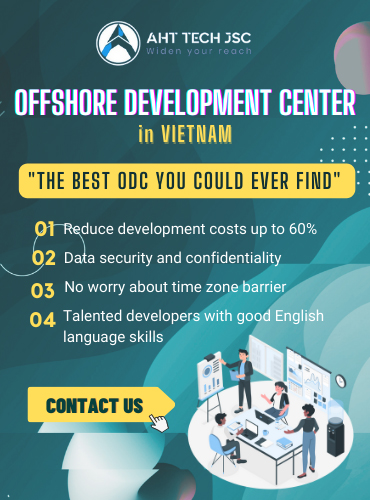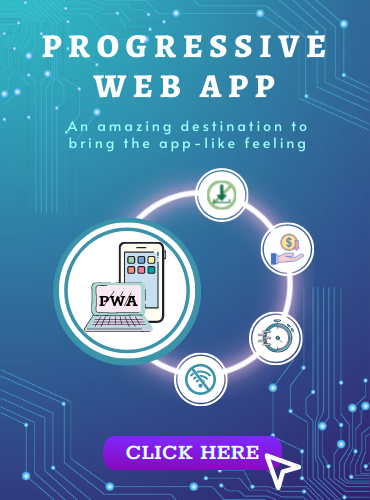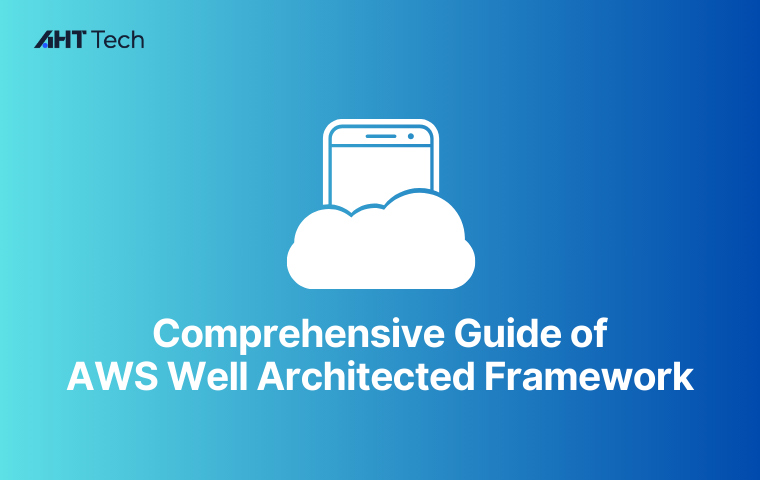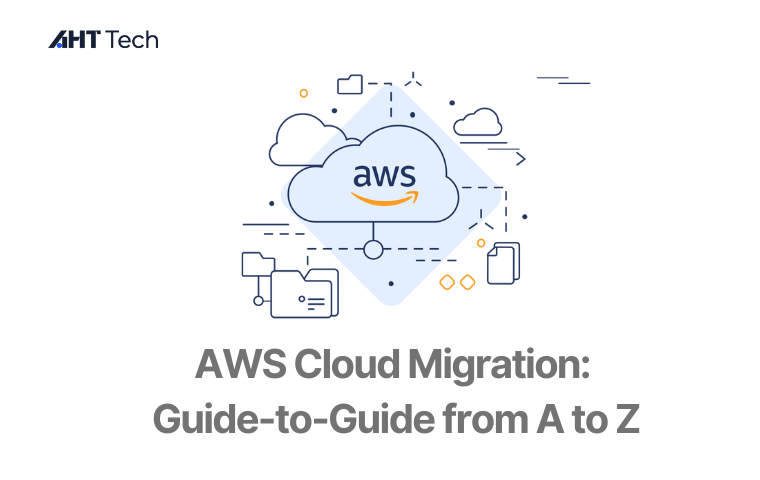Because of technology adoption, healthcare is more and more improved annually. As a result, Diagnosis and treatment for patients are more better thanks to the implementation of technology. Out of all the benefited sectors from technology adoption, . Especially, when we experienced Covid-19 for approximately 3 years, technology has demonstrated an important play in this industry.
Healthcare technology trends 2022 may expose some similar development in 2021. However, it will be the adoption of cutting-edge technologies. Therefore, AHT Tech will help you to find out the main healthcare technology trends for this year.
Healthcare technology market overview

According to the 2021 Future of Healthcare Report, almost 80% of healthcare systems plan to increase their investments over years. The list of best innovations of 2021 by TIME includes 25 health-related technologies. Therefore, this trend will continue to witness remarkable growth in these areas. Some of the areas are (AI), telemedicine, personalized apps, wearables extender reality (XR), and the internet of things (IoT).
8 main healthcare technology trends in 2022

Artificial Intelligence (AI) in healthcare technology trend
AI technology creates innovation in almost every field, and healthcare is also taking benefits from this technology. Therefore, its influence will continue to rank first place in healthcare technology trends in 2022. Besides, the global artificial intelligence in the healthcare market gained at $6.7 billion in 2020. It may expand at an annual growth rate of 41.8% from 2021 to 2028.
The term AI for healthcare means when computers and other machines mimic humans. And it has capable of learning, thinking, and making decisions or taking actions. AI in healthcare, then, is the use of machines to analyze and act on medical data. It is usually with the goal of predicting a particular outcome. Some of the most practical applications of AI in healthcare are medication timers, speech recognition, and online diagnoses through chatbots.

The high-level use of AI in healthcare is in making sense of the huge amount of messy, unstructured data understandable. They will make available for capture and analysis. In healthcare, this can take the form of medical image data as well as many other sources. It includes information on the spread of communicable diseases like covid, the distribution of vaccines, and even handwritten doctors’ notes.
The position of AI in battle with Covid-19
The global pandemic has had a massive effect on our society. Unless AI technology plays a crucial role in virus detection, prevention, and vaccine development, things could have been far worse. AI is also helpful assistance in controlling crowd temperature information. Via temperature screening, individual’s temperature can identify and find the disease between people. The utilizing AI technology in facial recognition is also another benefit. It can find out a person whether wear mask in a long time or not.
Moreover, AI gives a hand in the development of vaccines. People manufactured COVID-19 vaccines in record time thanks to advanced AI technology. Researchers used machine learning to help identify protein factors and produce viable vaccines in the shortest period of time. AI is also an adaptation of analyzing lung scans of patients who have contracted COVID-19. Then it helps medical professionals understand better the effects of contracting the virus and provide effective treatments. In the next year, it may be still a main healthcare technology trend in 2022.

AI assistance in mental health
Not only in physical health, but AI technology is also making its mark in mental health. Especially in the circumstances of the pandemic, AI affected directly individuals’ psychological well-being. According to Kaiser Family Foundation, over 30% of American adults have reported symptoms of anxiety or depressive disorder. When compared with 2019, it is less than 10%.
Besides AI technology is also aiding physicians to identify mental illness earlier. In addition, it puts together more targeted treatment plans, by categorizing patient diagnoses into different condition subgroups. Thanks to this, AI helped mental health professionals personalize the care they provide. With AI technology, therapists can sift through large amounts of data to identify family histories. Besides they have timely responses to prior treatments to make more insightful decisions. We can see that AI will continue to be one of the biggest healthcare technology trends you must know.
The role of AI in diagnosis symptom
Another field of healthcare that will take advantage of AI in the coming years is preventative medicine. It not only reacts to illness by providing treatments after the fact. But it also provides preventative medicine that aims to predict where and when illness will occur. And it puts solutions in place before it even happens. This includes predicting where outbreaks of contagious diseases will occur, and other factors. Then we may know that is likely to lead to health issues. For example, predicting opioid addiction in communities, or which patients who self-harm are most likely to attempt suicide. Besides, AI use the tool which can filter a large datasets far more effectively. Because of this, it leads to more accurate predictions and ultimately better patient outcomes.
Telemedicine and the Evolution of Remote Care
Another main healthcare technology trend in 2022 you must know is telemedicine or telehealth. Telehealth refers to health care delivered via the internet or over the phone. Live video calls, mobile health apps, remote patient monitoring are examples of this. Patients in isolated or rural places, for example, can access cardiologists via telehealth and receive therapy without traveling long distances.
Telemedicine has experienced the most rapid rise during the COVID-19 epidemic. It is one of the hottest topics in technology trend 2022. Since the launch of Covid-19, 82 percent of clients have used telemedicine for the first time. According to Mordor Intelligence’s study, the telemedicine market increase its present value of $38 billion to $168 billion in 2026. It has become an important aspect of the healthcare business as a whole.

The rise of new devices
A totally new field will appear to keep up with this trend. Remote healthcare become more popular and easier because of cutting edge technologies like telemonitoring devices, home messaging services, monitoring centers, and voice recognition.
Decentralized healthcare
Most of these interactions may see thanks to acute care. However, there has also been a rapid increase in chronic disease. People assume that telemedicine will play a massive role for people with diabetes.
Another main healthcare technology trend is XR
Extended reality (XR) technologies, such as virtual reality (VR) and augmented reality (AR), have enormous potential in healthcare. And it more and more proves its importance in healthcare technology trend 2022. XR is already helping to enhance many parts of healthcare, from self-care and wellbeing to therapy and even surgical operations. Although it is still early in the process, the transition is well underway. As a result, the healthcare business must prepare.
Virtual reality (VR), augmented reality (AR), and mixed reality (MR) are all relevant to the term extended reality (XR) (MR). All of these technologies use lenses or headsets to alter our view of the world. It may immerse us in completely virtual settings (VR) or superimpose virtual elements on real-time photographs of the surroundings (AR/MR). They all have the potential to revolutionize the healthcare industry.

For staff training
Students, interns, and medical specialists will take advantage of virtual reality to learn and have real experience. They get a fantastic opportunity to study anatomy with VR and gain a full range of practical knowledge.
For the patient treatment
Surgeons use VR devices to encourage operations, diminish the risk of errors and problems when it comes to actual surgery. They are the most prepared for complicated operations.
To help people with developmental disorders
These VR devices help people with disorders and phobias to adapt to life and socialize. In this way, they get preparations for contact with the real world in virtual reality. Devices can’t replace traditional therapy but enhance it impressively.
A great example is Psious, a virtual reality program that helps people overcome their fears. It works as an adjunct to therapy. The prestigious institutions in over 70 countries use it. With Psious, people effectively get rid of the fear of crowds, flights, and heights, overcome anxiety. Therefore they can learn the technique of mindfulness.
Healthcare technology trends 2022 refer to both mental health and information sharing, not only on maintaining physical conditions. As the World Health Organization named it, the infodemic — is spreading fake information on COVID. It turned out to be a significant obstacle on the vaccination company path.
IoT and Wearables in Healthcare
IoMT is the infrastructure of health care systems and services, to give effective remote care thanks to technology, data integration. According to Precedence Research, (IoMT) market has gained $39.3 billion in 2020 and maybe at $172.4 billion by 2030.
Internet of Things (IoT)-enabled devices have made remote monitoring in the healthcare sector possible. In addition, IoT unleashes the potential to keep patients safe and healthy and empowers physicians to deliver superlative care. It has also increased patient engagement and satisfaction. Besides interactions with doctors have become easier and more efficient. We need to take care of it to always stay updated in healthcare technology trends 2022.
Wearables
Wearable technology or “wearables” is a class of electronic devices. It can be in the form of jewelry. Or you can see it embedded in clothing, implanted in the body, or even tattooed on the skin. The gadgets are hands-free devices with practical applications. Wearable has the ability to send and receive data via the Internet. This technology is growing in importance as a subset of the Internet of Things, with potentially life-changing implications in medicine.
In healthcare, WIoT is a network of patient-worn smart devices. It may be electronic skin patches, ECG monitors, etc.) with sensors, actuators, and software. Besides, it will connect to the cloud that enables the collection, analysis, and transmission of personal health data in real-time. The COVID-19 pandemic and increased demand for remote monitoring and care delivery.

Smart pills
Smart pills are similar to digital pills. They are medications that come along with edible electronic sensors. Then this pill will send wireless messages to devices like patches, tablets, or smartphones outside the body.
Creating IOMT solution
WHO estimates that “20–40% of all health spending is wasting through inefficiency. One major way to maximize efficiency is through equipment utilization. Healthcare providers will turn to Real-Time Location Systems (RTLS) to prevent hoarding, minimize theft, and limit misplacement of assets.
In 2022, healthcare providers will use IoT solutions to track assets and monitor patients. Wearables and other IoT devices enable healthcare providers to monitor patients. They may locate inside a facility or in the comfort of their own homes. Remote monitoring devices are especially useful for facilities dealing with staff shortages or for patients with chronic health conditions. Real-time data from these devices equip healthcare providers and caregivers with the information to make effective and timely decisions.
Organ Care Technology & Bioprinting
Improving organ care technology
The next step to address this issue is that we need to enhance organ care technology. This means taking care of the organ while it’s outside of the body. The Organ Care System is a great model which is in use by the Ohio State University’s Wexner Medical Center. This device can keep a heart, lung, or liver outside of the body for several hours through proper care, heat. And it will give the provision of crucial nutrients.
In the future, a doctor’s intervention can be no longer. Instead of that, artificial intelligence may take control to preserve the organ for longer periods of time. Especially, machine learning can have a better ability in determining whether an organ is suitable for transplantation or not. The faster people solve a problem, the more quickly a life can be active.
Bioprinting: creating new organs
The bioprinting landscape has witnessed remarkable development in the last decade. It made huge steps towards the goal of 3D printing functional tissues and organs. Although researchers are only scratching the surface of on-demand organ production, they lay the groundwork for future innovations. However, despite its immense potential, it is important to emphasize that bioprinting can use beyond organ printing alone.
The development of tissues or entire organs through bio-engineering will make organ transplantation take an enormous leap forward. We’re certain this trend will keep evolving to change healthcare towards a patient-centered approach.
The IEEE Computer Society’s Technology Predictions for 2022 predict a growing application of additive manufacturing (3D printing) in healthcare. This includes 3D printing prostheses. Another of the advantages of 3D printing prostheses is the ability to manage quality and product availability “just in time.”

Customized Mobile Apps
Communication, efficiency, and quality of the service are improving quickly thanks to mobile healthcare apps. They create a new face for the healthcare ecosystem. Some statements predict that the mobile health industry will peak at market size of 189 billion US dollars by 2025.
Apps for healthcare are a boon to the medical profession. This technological marvel can assist not only doctors and patients but also hospital personnel and pharmacists. Clinicians can use mobile apps to successfully simplify communication between patients, providers, and caregivers. The app can manage a patient’s status 24 hours a day, seven days a week, and tailor healthcare for individuals.
Apps provide financial advantages for organizations to embrace them, such as lower workflow management expenses. Providers use mobile apps as a safe platform to handle and access sensitive healthcare information without jeopardizing data security.
Someone may now enter their own medical information into the app. They keep a log of doctor’s appointments, treatments, and even track their health on a daily basis. These personalized apps can aid people to keep track of nutrition, fitness, drugs, and a variety of other medical issues. This can actually assist doctors in keeping track of patient records and improving treatment. “There’s an app for that,” as the adage goes, and it’s here to stay and evolve.
With a market value of about $100B, every medical expert and organization looks to the best healthcare app development services. Therefore, numerous healthcare mobile app development companies are emerging. As you embark on choosing a preferred healthcare app development company, you’ll need an experienced companion.
Cyber security and Data Privacy

Under the influence of digital technologies, the healthcare industry has changed dramatically during the last decade. The global pandemic has turbocharged data and processes. It put the world on notice that it must adapt. However, the ability of healthcare to secure patient privacy may intend to question.
Data security is still a major industry concern. Therefore health information technology trends will continue to include cybersecurity for a long time. All future technical advancements will be based on the need for a strong security layer. The ultimate goal is to safeguard sensitive patient data transmitted over the internet.
In healthcare, cyber security refers to the safeguarding of electronic data and assets against unauthorized access, use, and disclosure. The “CIA trinity” refers to the three purposes of cybersecurity: protecting the confidentiality, integrity, and availability of information.
The number of weekly attacks on healthcare organizations reached an average of 626 per organization by the end of 2021. And this data continues to rise. According to the US Federal Bureau of Investigation, hackers approached more than 40 million patients’ medical records in 2021. In this number half of the internet-connected hospitals, devices are susceptible to hacks.
Still, cyber security is a hot topic, considering the growing number and risks of data breaches. The increasing extent of information sharing and the ability of computer systems to exchange information will only deepen the problem. In circumstances, the healthcare market will actively search for truly secure and reliable software to safety standards in 2022.
Future of Healthcare Technology Trend
As we navigate the epidemic, it’s apparent that the healthcare business has undergone significant transformations that are here to stay. Then healthcare businesses have no choice but to adopt this trend to reach new heights.
Many of the themes may not be totally new – in fact, some of it has been around quite often. The COVID-19 pandemic pointed out that the healthcare business needed to adopt technology and new trends and recognize their usefulness.
Fully adaption cutting-edge technology is the key to unlocking the future of higher-quality care. Finally, the success of each healthcare technology trend will depend on whether or not they translate into measurable outcomes.












